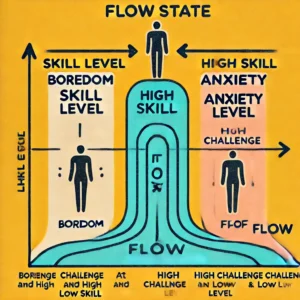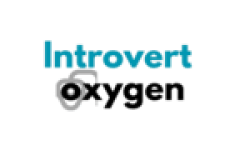Anyone who has contributed something to the world or become successful in the field, has the ability to give their 100% focus on their work.
As an introvert, you’ve likely noticed that when you’re able to focus, it’s like tapping into a superpower. But most of the time, we found ourselves overthinking. Instead of diving into tasks, you may find yourself lost in thought, questioning every decision, and never quite starting.
We live in a world that constantly pulls at our attention Between social media, constant notifications, and the pressure to multitask, staying focused is more difficult than ever.
That ability to dive deep into your thoughts and get lost in what you’re doing? It’s a strength that often gets overlooked.
Bill Gates, one of the world’s most successful introverts, attributes much of his success to his ability to focus deeply. He famously said, “Focus is a matter of deciding what things you’re not going to do.
“ Gates’ strategy wasn’t just about what he did,it was about eliminating distractions. He built Microsoft, not by trying to do everything, but by zoning in on his most important tasks.
This laser focus allowed him to turn small, consistent efforts into world-changing results.
Let’s dive into a three-step process to help you unlock your full focusing potential.
Step 1: Build Momentum, Then Maximize Productivity
Suppose you have a task to do and now there would be two possible problems for you.
- You haven’t started yet
- You are doing it but not doing it effectively
If you are in no 2, then you need to focus on your efficiency that I will cover in step 3( deep work)
But for most people the biggest barrier to focus is getting started. Ever had a task that felt so overwhelming you just couldn’t bring yourself to begin? It’s all too common, and it can leave you stuck in an endless loop of procrastination.
For this reason, you need momentum. Momentum is the antidote. Once you start, it’s easier to keep going.
The great way to build momentum is The Kaizen Technique.
Kaizen is a Japanese philosophy that focuses on making continuous, small improvements. Instead of overwhelming yourself with the idea of finishing a huge project, you can break it down into tiny, manageable steps.
Want to write a report? Start by jotting down just the heading. Want to clean your office? Begin with a single drawer. The goal is to create momentum, and once you’re moving, the work becomes easier and more enjoyable.
Once you start a task what you need is to enter into a FLOW state.
As you start gaining momentum, something magical can happen—you enter what’s called the flow state. This is when you’re so absorbed in what you’re doing that everything else seems to fade away. Time flies, distractions disappear, and you’re performing at your peak.

The flow state, as shown in the diagram, is a mental zone where you’re completely absorbed in a task, and time seems to disappear. On the X-axis, we have “Skill Level,” and on the Y-axis, “Challenge Level.” The flow state occurs when your skill level and the challenge of the task are in balance.
- Boredom happens when your skill is high but the challenge is too low. In this zone, tasks feel easy and unengaging.
- Anxiety occurs when the challenge is too high for your current skill level, making the task overwhelming.
- Flow is that sweet spot in the middle, where the task is challenging enough to engage your skills, but not so difficult that it causes stress. When you hit this zone, you can perform at your best and stay focused effortlessly.
This balance is key to achieving deep focus and maintaining productivity.
Step 2: Self-Talk—Mastering Your Inner Dialogue
Serena Williams, a tennis legend, uses more than just physical skill to win,she harnesses the power of positive self-talk.
During the 2015 French Open, Serena Williams found herself in a tough spot. Battling the flu, she was losing early in a crucial match. Most athletes might have let the pressure and illness get the best of them, but not Serena. As the match progressed, she leaned on her mental strength—her self-talk.
Between points, Serena repeated to herself, “I am strong enough. I can win this.” It wasn’t just about blocking out negative thoughts, it was about channeling her inner strength.
She later shared in an interview, “I tell myself, ‘You’re strong. You can do this.’ I say it out loud because it’s important to hear those words.”
Despite feeling physically drained, her positive self-talk pushed her forward, and Serena turned the match around, eventually winning both the game and the tournament.
Self-talk is a powerful tool that can make or break your ability to stay focused, especially as an introvert. It’s essentially the ongoing conversation you have with yourself in your head.
Positive self-talk can keep you motivated, while negative self-talk can throw you off course.By using self-talk effectively, you can guide yourself through tough moments, boost your confidence, and maintain focus on your tasks.
How to Use Positive Self-Talk
When you’re facing a challenging task, try these self-talk examples to maintain focus and push through:
- Encouragement in Difficult Times: Let’s say you’re working on a long report or a project. Instead of saying, “This is too hard, I can’t do it,” reframe it with: “This is tough, but I’ve done hard things before, and I can handle this too.”
- Focusing on Progress, Not Perfection: When you’re stuck overthinking, switch the narrative from “I’ll never get this perfect,” to “I don’t need to get this perfect right now. I’ll just take it one step at a time.”
- Visualizing Success: Before starting a task, picture yourself completing it successfully. Say to yourself, “I’m capable of doing this, and I’ll feel great once it’s done.” This visualization primes your mind for success.
- Recognizing Your Strengths: Sometimes, when you hit a difficult spot, remind yourself of your skills. For example, “I’m a great problem solver, I just need to give myself time to think this through.”
Step 3: Deep Work—Mastering the Art of Undistracted Focus
In his book Deep Work, Cal Newport explains that in today’s world of constant distractions, the ability to focus deeply is more valuable than ever.
Deep work is defined as the act of focusing without distraction on a cognitively demanding task. Newport outlines four methods to help you embrace deep work, each suited to different lifestyles and work environments.
Let’s explore each method and see how famous people or Newport’s examples apply them to achieve extraordinary results.
1. The Monastic Approach
This approach involves completely cutting off all distractions for long periods of time to focus solely on a high-value task.
It’s extreme but effective. The idea is to create an environment where deep work is your only option.
Bill Gates famously takes “think weeks,” where he isolates himself in a cabin for several days without any interruptions—no internet, no meetings, no distractions.
During these weeks, he dedicates his time to reading, thinking, and developing new ideas. It was during one of these weeks that Gates formulated key strategies that would shape the future of Microsoft.
The monastic approach works best when you need to generate breakthrough ideas or work on a highly complex task.
2. The Bimodal Approach
In the bimodal approach, you split your time between periods of deep work and shallow tasks. Deep work happens during blocks of uninterrupted time, while shallow work (emails, meetings) happens during designated periods.
This way, you don’t have to live in constant isolation, but you still make room for intense focus.
Carl Jung, one of the most influential psychologists, used the bimodal approach. He would spend extended periods in a quiet retreat in the Swiss Alps, fully focused on his deep thinking and writing.
At other times, he would return to his clinical practice, engaging with patients and everyday tasks. By alternating between these two modes, Jung was able to make groundbreaking contributions to psychology while maintaining his professional responsibilities.
3. The Rhythmic Approach
This approach involves creating a daily routine that includes consistent, scheduled blocks of deep work. By making deep work part of your daily rhythm, you turn focus into a habit.
It’s less rigid than the monastic or bimodal approaches but highly effective for those who want consistency without total isolation.
Author Stephen King is a master of the rhythmic approach. He writes every day for a set period, usually in the morning, without fail. King believes that writing at the same time each day not only builds discipline but also trains the brain to enter a deep state of focus.
By dedicating a few hours every morning to his craft, King has written over 60 bestselling novels, making deep work a cornerstone of his creative process.
4. The Journalistic Approach
The journalistic approach is the most flexible of all. It involves fitting deep work into your schedule whenever you can, much like how a journalist might write an article during downtime between assignments.
This approach is best for people with unpredictable schedules who need to seize moments of focus whenever they appear.
Walter Isaacson, known for his biographies of Steve Jobs, Leonardo da Vinci, and Albert Einstein, uses the journalistic approach. Given his busy schedule, Isaacson grabs moments of deep focus whenever possible, whether it’s early in the morning or during travel.
He focuses intensely on writing and research during these windows of opportunity, making the most of any available time to produce high-quality work.
Which Method Works for You?
Each of these deep work methods offers a different path to mastering focus. Whether you’re ready to adopt Bill Gates’ monastic isolation or Stephen King’s rhythmic daily routine, the key is to choose the one that aligns with your lifestyle.
By embracing deep work, you’ll find yourself cutting through distractions and producing work that truly matters,just like these famous figures.









